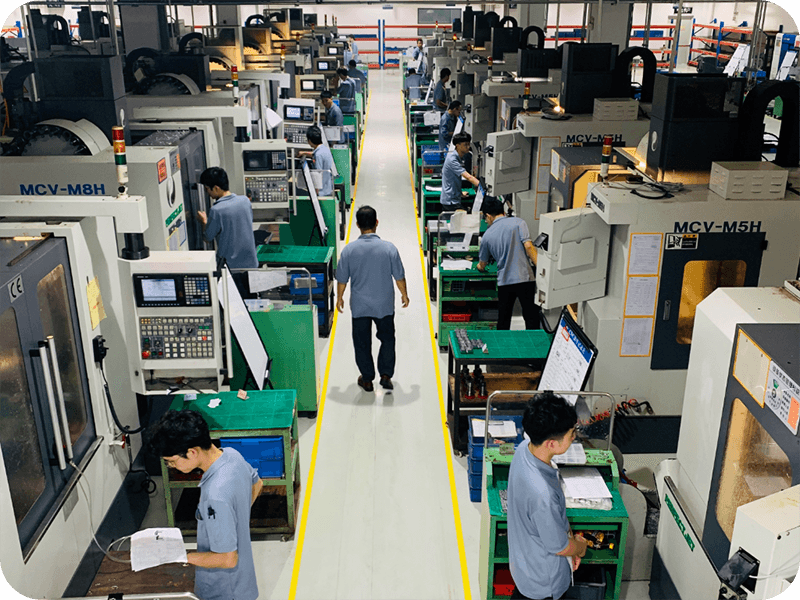Machining deviation refers to the difference between the actual geometric parameters (size, shape and position) of the part after processing and the ideal geometric parameters. There are many reasons for machining errors of mechanical parts, including many error factors in the process system composed of machine tools, fixtures, cutting tools and workpieces, such as principle errors, clamping errors, errors caused by manufacturing and wear of machine tools, fixtures and cutting tools, etc.
Contents
Part One: Manufacturing deviation of machine tools
Part Two: Geometric deviation of Tools
Part Three: Geometric deviation of fixture
Part Four: Deviation caused by thermal deformation of the process system
Part Four: Internal Stress

Part One: Manufacturing deviation of machine tools
The manufacturing errors of machine tools will affect the accuracy of the workpiece being processed. Among the various errors of machine tools, the main ones that have a greater impact on the machining accuracy of the workpiece are the spindle rotation error and the guide rail error. Spindle rotation error is caused by spindle bearing wear, spindle bending, spindle axial movement, etc., while guide rail error is caused by wear of the guide rail surface, too large or too small guide rail clearance, etc.
In order to avoid the impact of machine tool manufacturing errors on the accuracy of the workpiece being processed, the following measures can be taken:
a. Choose high-precision and high-stability machine tools;
b. Keep the machine tool in good lubrication condition;
c. Keep the machine tool clean to prevent dust and other impurities from entering the guide rail pair;
d. Use appropriate fixtures and tools;
Part Two: Geometric deviation of Tools
The geometric error of the tool refers to the difference between the shape, size and other geometric parameters of the tool and the design requirements, which will affect the accuracy of the workpiece being processed. The geometric errors of the tool mainly include: tool shape error, tool size error, tool surface roughness error, etc.
In order to avoid the impact of the geometric error of the tool on the accuracy of the workpiece being processed, the following measures can be taken:
a. Choose high-precision and high-stability tools;
b. Keep the cutting tools in good lubrication condition;
c. Use appropriate fixtures and machine tools;
Part Three: Geometric deviation of fixture
The geometric error of the fixture will affect the accuracy of the workpiece being processed. The geometric errors of the fixture mainly include: positioning error, clamping error, tool setting error and installation error of the fixture on the machine tool, etc.
In order to avoid the impact of the geometric error of the fixture on the accuracy of the workpiece being processed, the following measures can be taken:
a. Use high-precision fixtures;
b. Strictly control the positioning and clamping accuracy of the fixture;
c. Correctly select the positioning components in the fixture so that the manufacturing accuracy matches the dimensional accuracy of the process that needs to be ensured;
Part Four: Deviation caused by thermal deformation of the process system
During the machining process, the process system will undergo complex thermal deformation due to cutting heat, friction heat and sunlight, which will change the position and motion relationship of the workpiece relative to the tool, resulting in machining errors. Thermal deformation errors often have a decisive impact on precision machining, large parts processing and automated processing.
To avoid this error, the following measures can be taken:
a. Optimize the machine tool structure and reduce thermal deformation;
b. Use high-quality coolant;
c. Use high-quality lubricating oil;
d. Use high-quality materials;
Part Five: Internal Stress
Internal stress refers to the stress that remains inside the object after the external load is removed. It is caused by uneven volume changes in the macroscopic or microscopic structure within the material. Once internal stress is generated on the workpiece, the workpiece metal will be in a high-energy unstable state. It will instinctively transform to a low-energy stable state, accompanied by deformation, causing the workpiece to lose its original machining accuracy.
The internal stress of machined materials can be removed through stress relief annealing, tempering or natural aging treatment, vibration and stress relief. Among them, stress relief annealing is one of the most commonly used and effective methods to eliminate welding residual stress, casting residual stress, and machining residual stress.

GPM has a professional R&D team and technical personnel who have rich mechanical processing experience and technical knowledge and can provide customized solutions and optimized designs according to customer needs to ensure that the processing results meet customer requirements. At the same time, GPM attaches great importance to quality management and has a complete quality control system and strict testing procedures. We use advanced measuring instruments and equipment to ensure that each processed part meets the requirements and achieves high precision and quality.
Post time: Oct-05-2023
